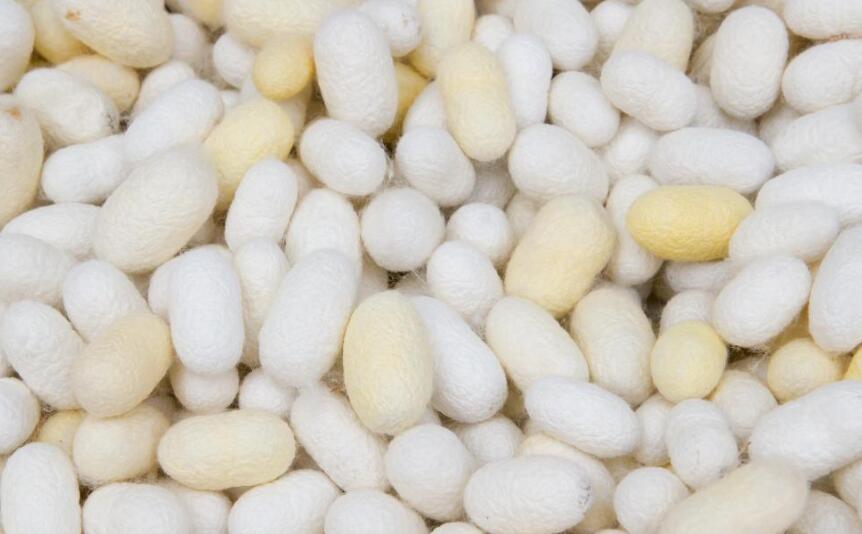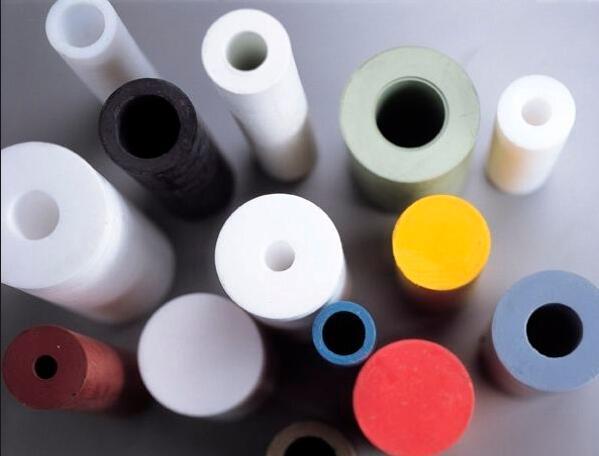Nylon and PTFE are manmade synthetic polymers that are most widely used in the polymer industry. Nylon is a polyamide and polymer is a fluoro polymer. Both of them possess a high molecular weight and they are thermoplastics. PTFE is a water phobic, chemically less reactive material with a high electric conductivity, and a very low coefficient of friction. Nylon is a silky material and it is an alternative for both metals and non-metals, including brass, bronze, wood, plastics, and rubber.
What is Nylon
Nylon is an aliphatic polymer, a polyamide that is most widely used in many industries. Nylons are thermoplastics. It is used as a bearing, as well as a wear material. The most frequent usage of nylon is as a replacement for bronze, brass, steel, and aluminum. In addition, it can be used as an alternative material for wood, plastics, and rubber too.
Nylon is a silky material that was first produced by Wallace Carothers in 1935. Nylons are produced from the reaction of hexamethylenediamine with adicarboxylic acid (1:1 ratio) in the presence of water, in a reactor.

Nylon fibers are used to produce bridal veils, strings in musical instruments, carpets, pipes, tents, and clothing materials. The solid form of nylon is also used in some industries to produce combs and mechanical parts including gears and machine screws. Extrusion, casting, and injection molding are the techniques used to produce engineering grade nylons.
What is PTFE?
PTFE is a synthetic fluoropolymer that is also known as polytetrafluoroethylene (PTFE). It is an accidently discovered material by a Dupont chemist, Dr. Roy Plunkett in 1960, when he was working on finding an alternative material for cooling purposes.

It has a numerous number of commercial uses due to its unique physical and chemical properties. It is a hydrophobic material. Therefore, neither water nor solutions containing water can wet the polymer surfaces. polymer is widely used in non-stick cooking pans as a coating. This is also used as a lubricant since it reduces the friction. The bonding structure of PTFE is very stable; therefore, it has a low chemical reactivity and a high boiling point. In addition, it has a good electrical conductivity. polymer is a thermoplastic material, which means its properties changes when it is heated or cooled. PTFE possesses all these useful properties due to its molecular structure.
What is the difference between Nylon and PTFE?
• The chemical elements present in the nylon polymer are Carbon, Hydrogen, Oxygen, and Nitrogen. polymer contains Carbon and Fluorine only.
• Both nylon and PTFE have intramolecular forces, where that of nylon is “hydrogen bonds” and that of polymer is “London dispersion forces.”
• The monomer (repeating unit) of nylon is (-NH-[CH2]5-CO-) and that of PTFE is (-F2-C-C-F2).
• Nylon is a hydrophilic material whereas PTFE is a hydrophobic material.
PS: Contact us for PTFE finished products free sample
Post time: May-14-2017

